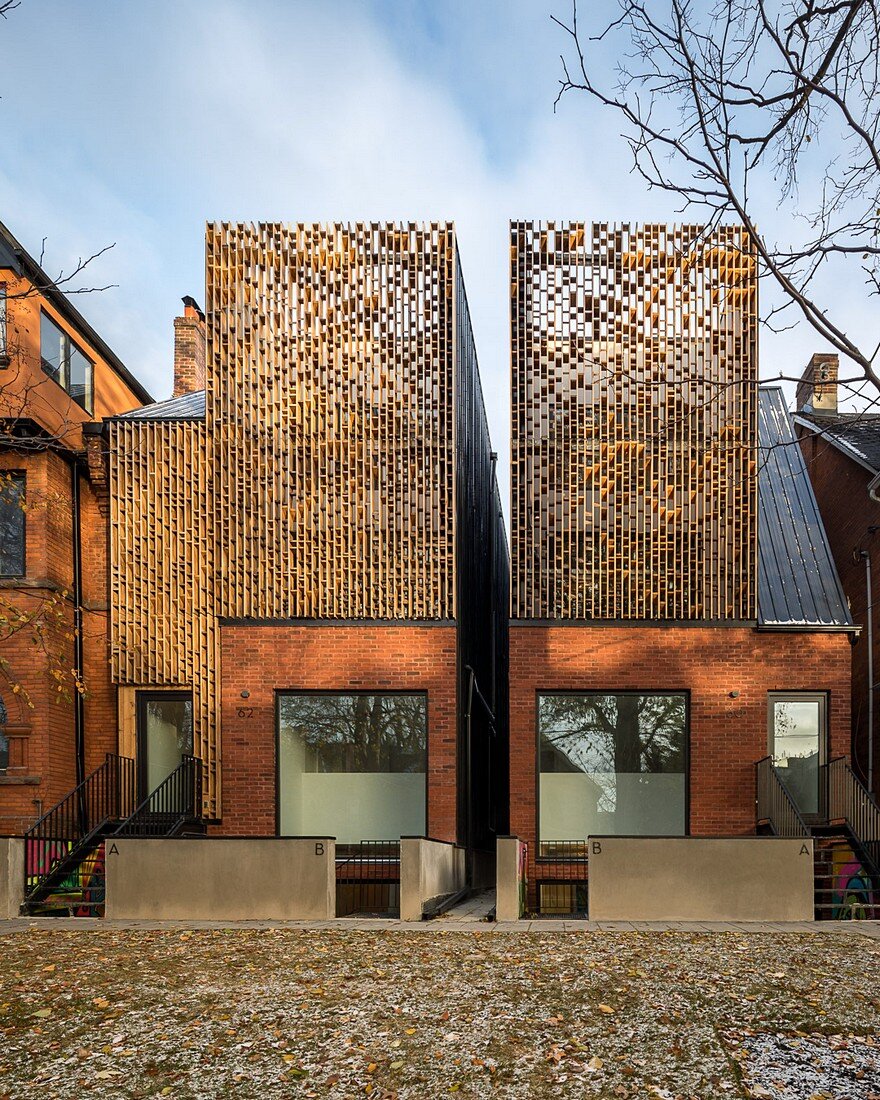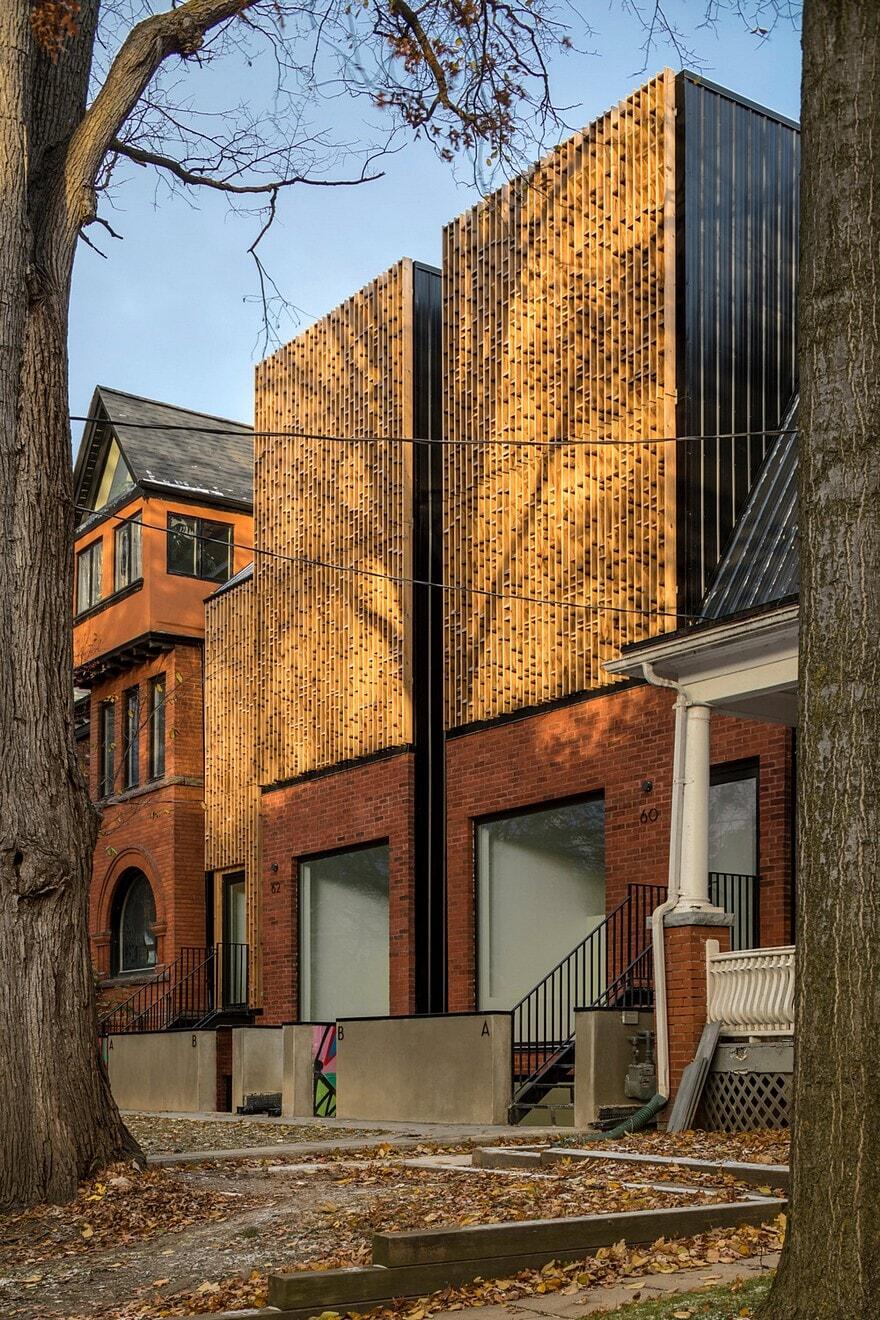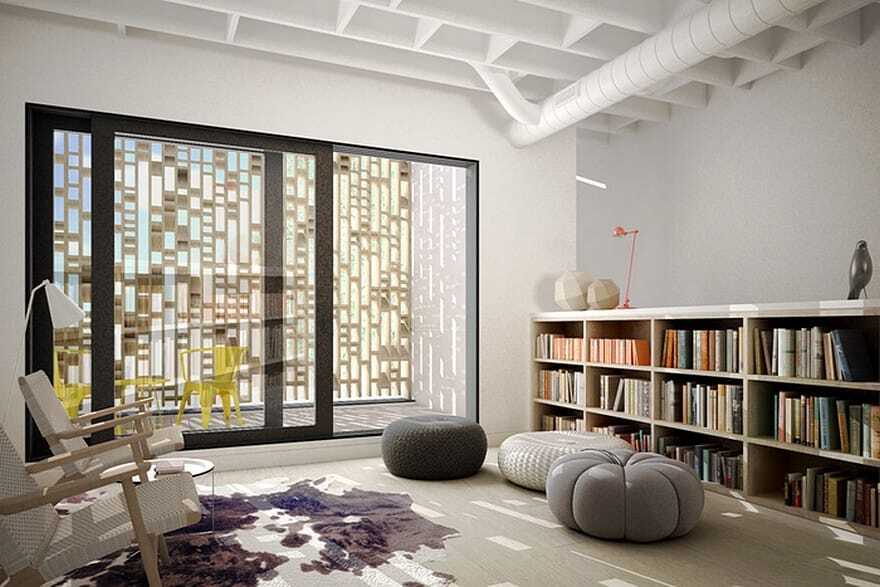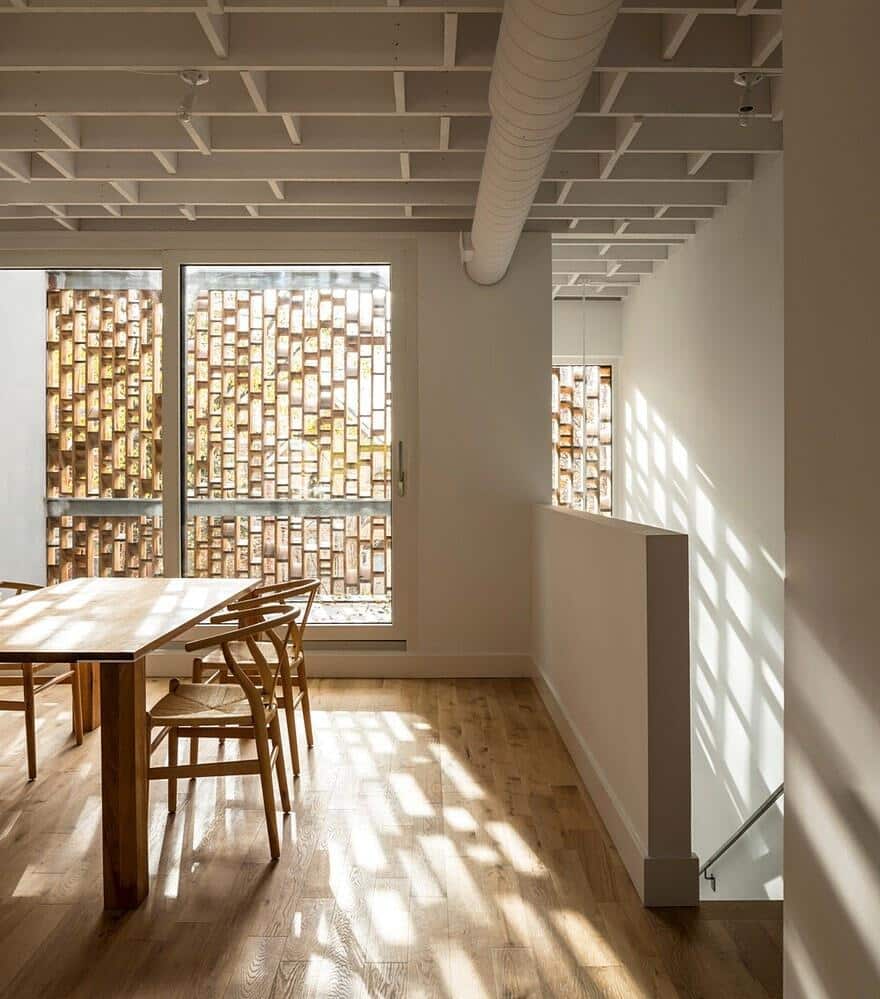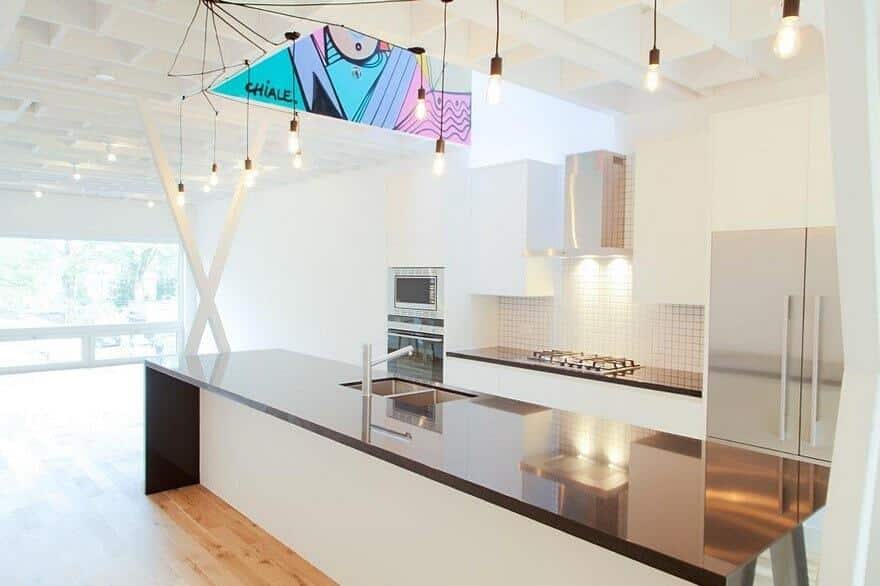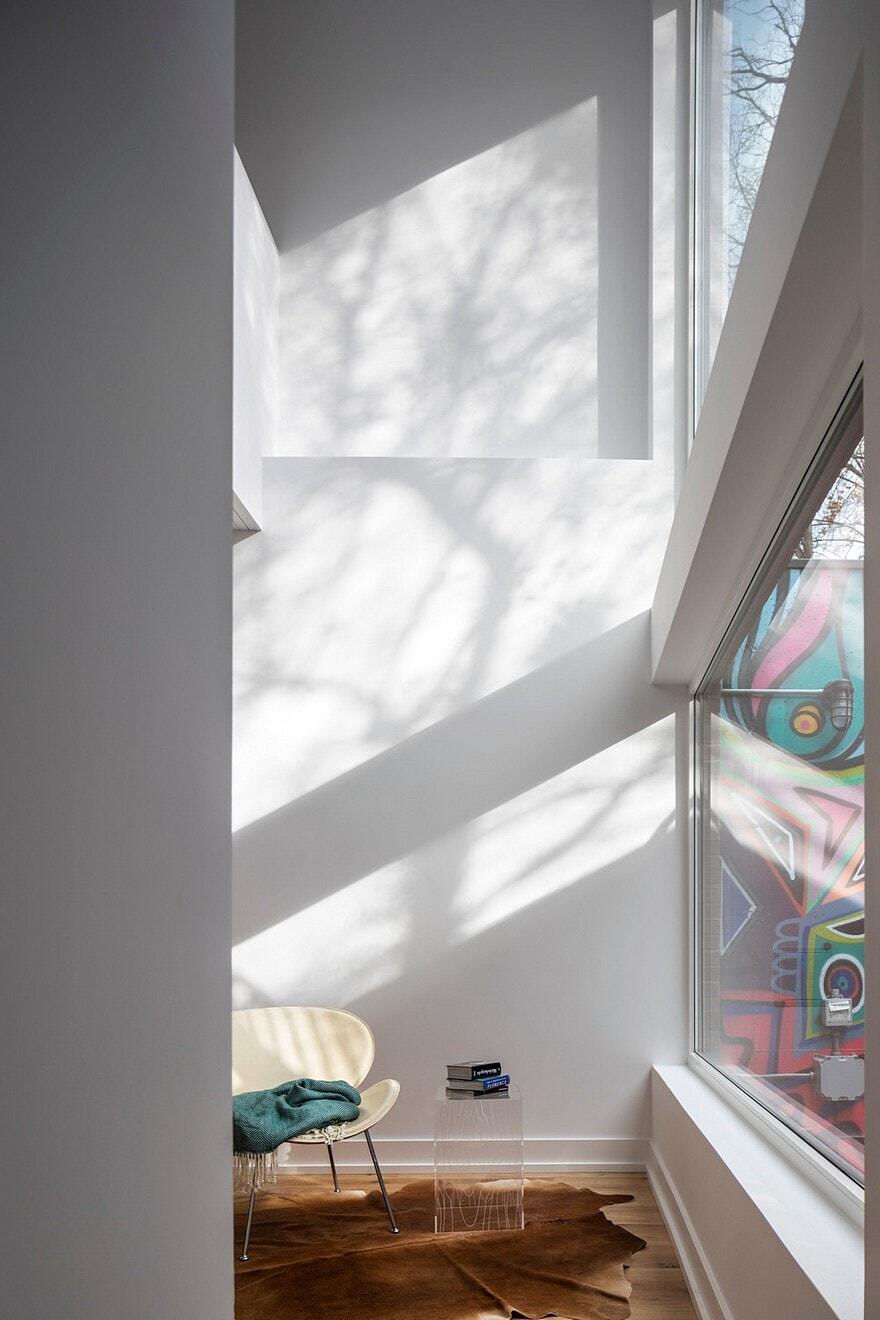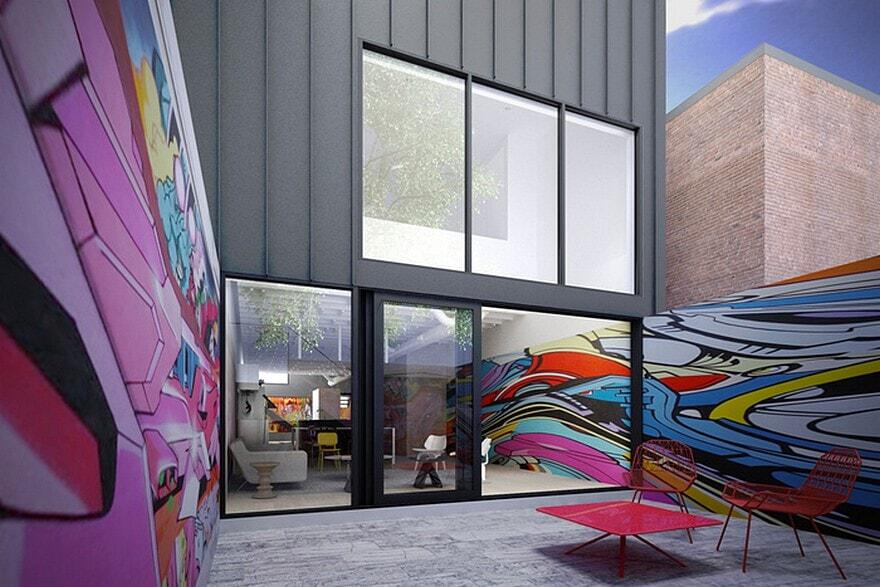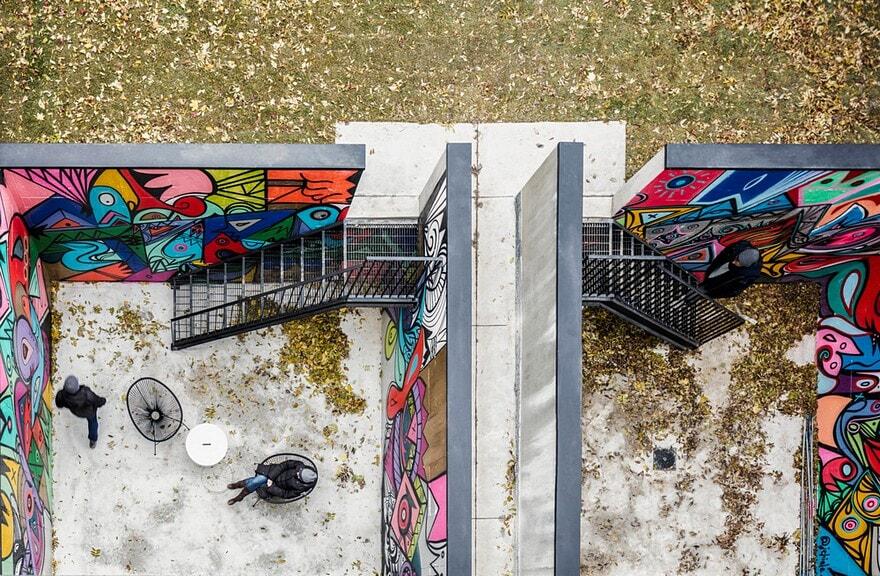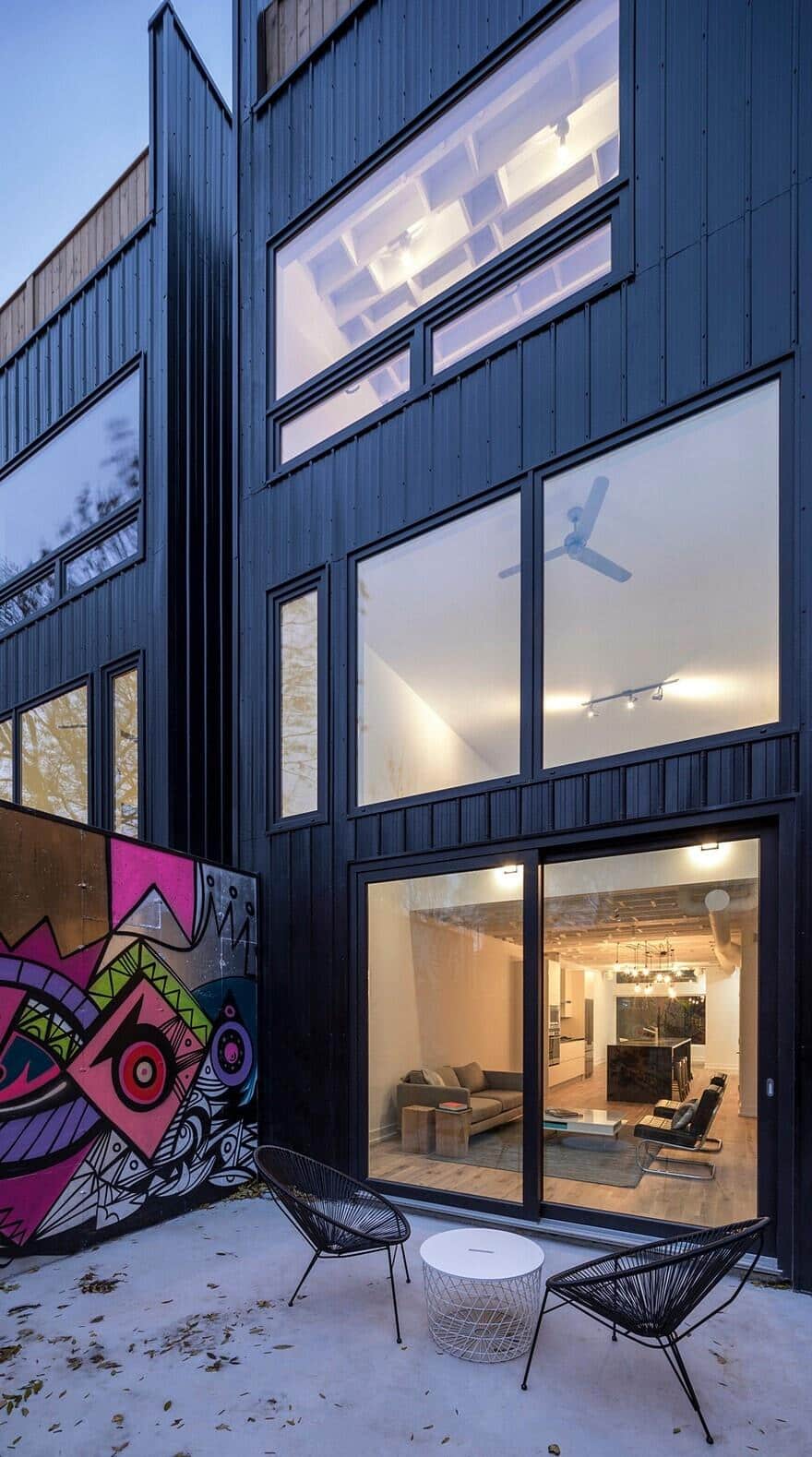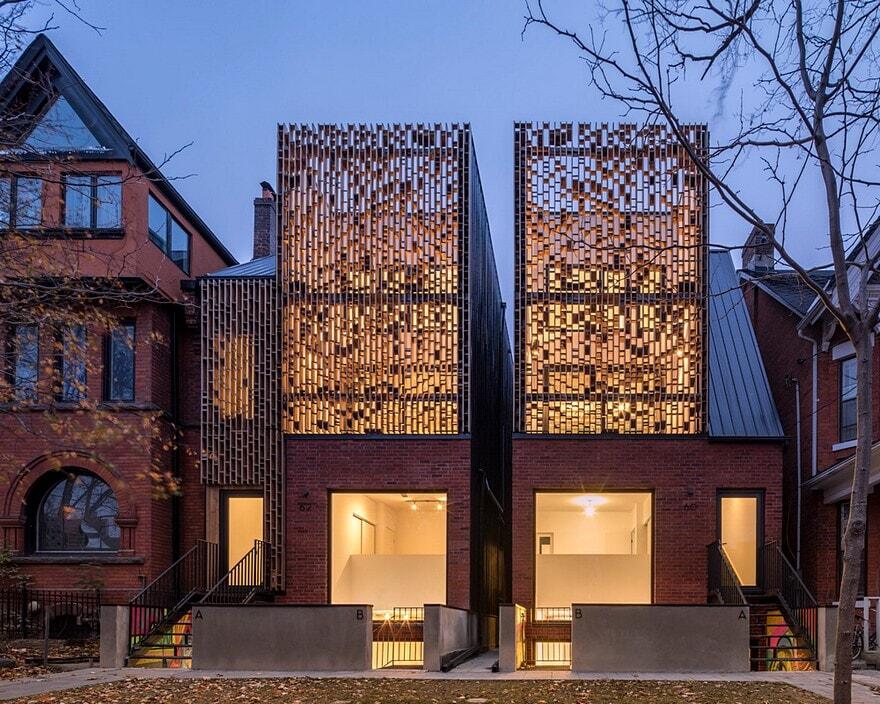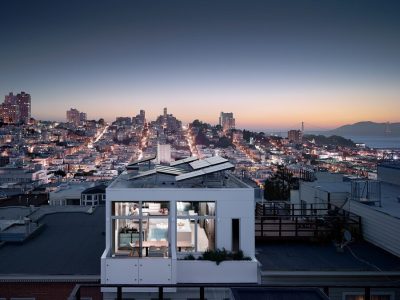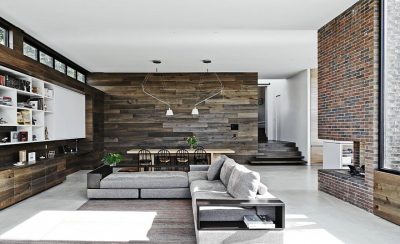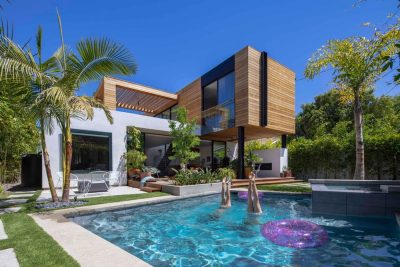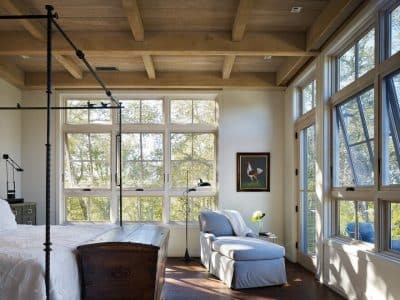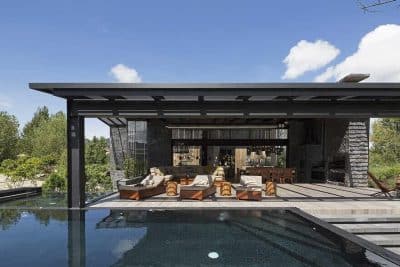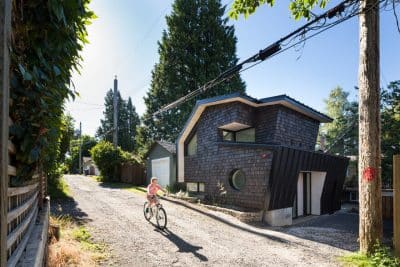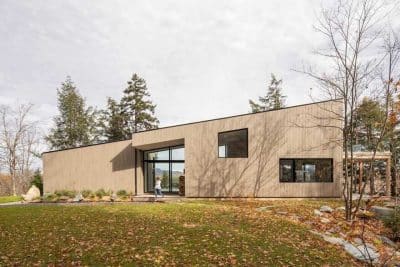Project: Double Duplex
Architects: Batay-Csorba Architects
Team: Jodi Batay-Csorba, Andrew Batay-Csorba,Lola Abraham
Location: Toronto, Ontario, Canada
Area: 2 x 3,500 sft
Photography: Doublespace Photography
Double Duplex was recently designed by Batay-Csorba Architects, a Toronto-based architecture studio founded in 2010 by Andrew Batay-Csorba and Jodi Batay-Csorba.
The Double Duplex was created in response to the cities growing need for alternative housing models due to the rising cost of urban real estate and the need for urban densification within Toronto’s established residential neighbourhoods. A proliferation of high and mid-rise condo’s have densified the urban core and serve as the predominant model for entry level home ownership within the city. However, very few new low rise infill models of densification or affordable living within Toronto’s sought after historic residential neighbourhoods have been developed.
The Double Duplex infill project is located on Melbourne Avenue in Parkdale, one of Toronto’s most notable historic neighbourhoods for their century old Victorian and Bay and Gable mansions. The existing double wide site was severed into two separate properties with a four storey 3,500 square foot detached duplex residence being constructed on each site, allowing property owners to either rent out one of the units to subsidize their own income or to use it as a live work space.
Many of the 19th Century mansions, often later converted to rooming houses still exist and are being converted back into single family homes. The unique Parkdale neighbourhood now finds itself home to a large burgeoning artist community. Double Duplex pays tribute to the artistry of its surroundings by making contextual relationships through massing, geometry, texture and detail. The project reinterprets the pervasive bay-and-gable typology by abstracting its architectural elements. These include the front balcony, large bay massing, steep roofs and sharp vertical lines. Also playing up this relationship are the high ceilings and large windows, which allow light to reach deep into narrow floor plates.
Leveraging digital fabrication techniques and new material technologies, the project translates the crafted historic brick façades by way of a two-storey brise soleil. The brise soleil encloses the front and rear upper balconies, providing controlled lighting conditions and privacy. Individual pieces of bio-enhanced, rot-resistant, sustainable softwood are organized to create a large-scale dynamic façade. During the day, sunlight is filtered through, illuminating the interior spaces with ephemeral dappled light effects. At night, the screen reads as a decorative glowing lantern.
The project also offers strategies for the dynamic spatial integration of exterior and interior spaces within a with a narrow and deep infill lot, which is typical in Toronto. Each duplex residence consists of a two-storey lower unit and a two-storey upper unit. The lower unit is carved out in the front and back with double-height volumes that flow out to sunken courtyards, maximizing the amount of daylight entering the unit. Brightly painted murals by local artists wrap its courtyards.
The upper unit is organized around a double-height atrium that brings natural light and ventilation into the centre of the apartment. Two exterior courtyards punctuate either end of the floor plate: a double-height balcony overlooks the street at the front, and the master bedroom enjoys a rear terrace.
Double Duplex creates an activated urban environment on the busy residential street. In contrast to a static building façade, which would be out of context adjacent to ornate historic residences, the project acts like a large art installation with material and spatial depth. The two-storey brise soleil is angled so that multiple images appear to passersby as they walk past it, and the screen catches the light’s movements throughout the day. Composed based on cloud images, the screen evokes loose, variable associations and emotions. The effect is somewhat akin to the cloud animals that we have all seen as children, losing ourselves in daydreams.

